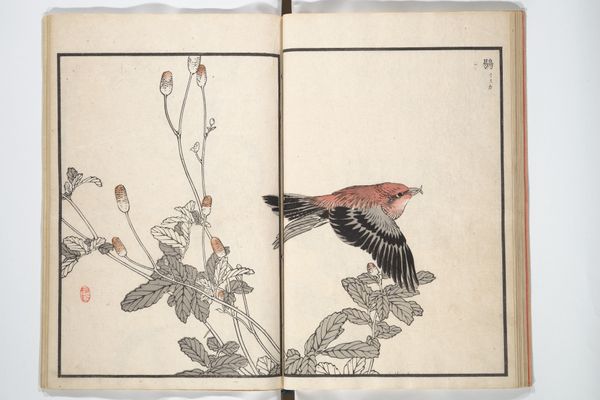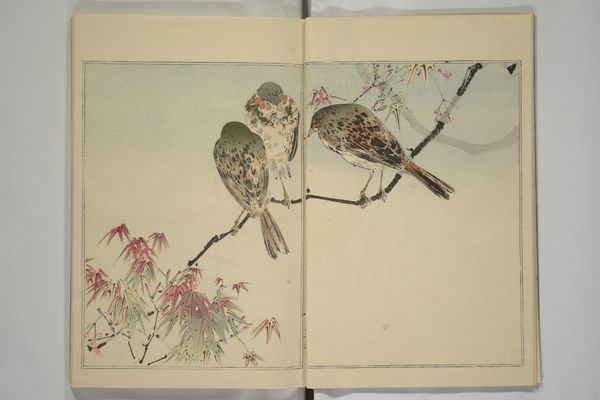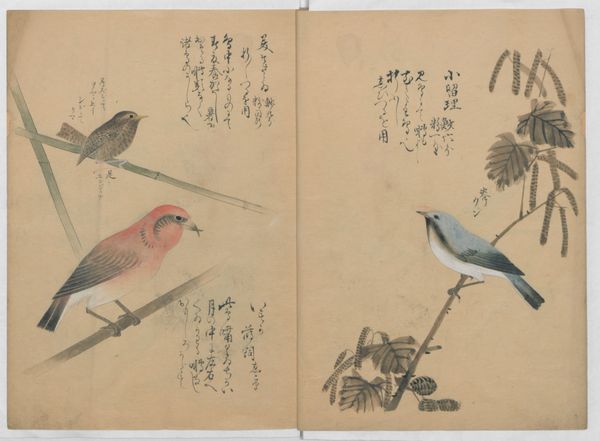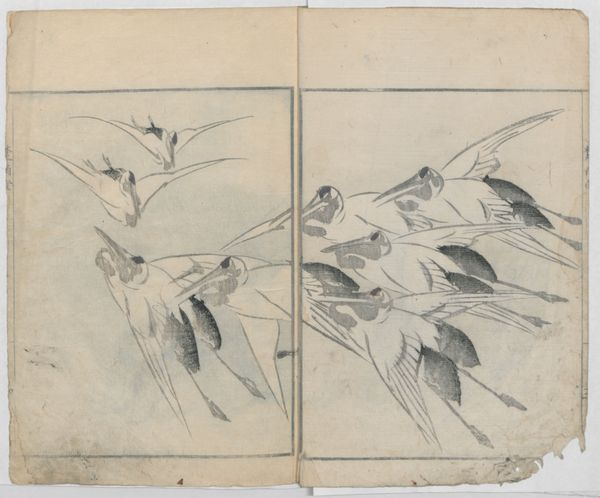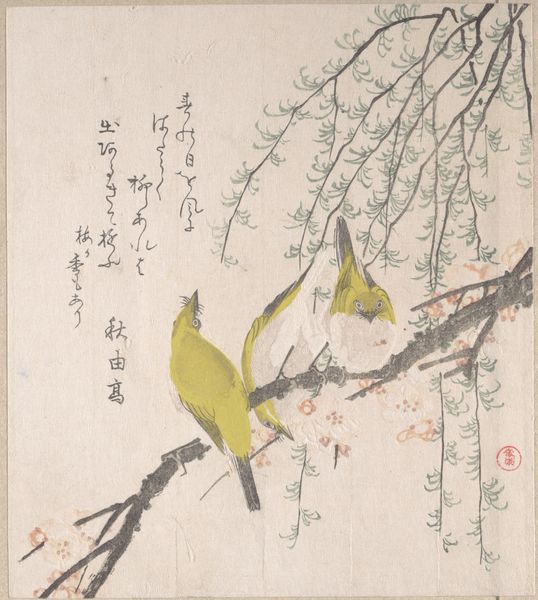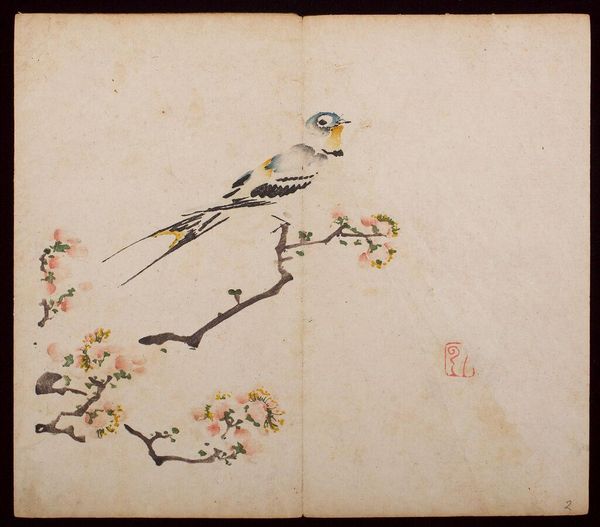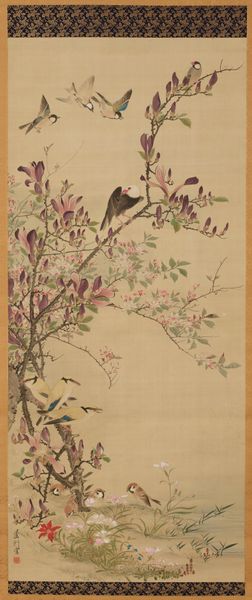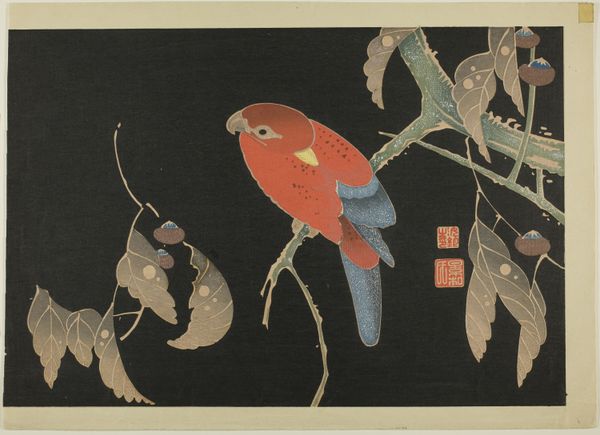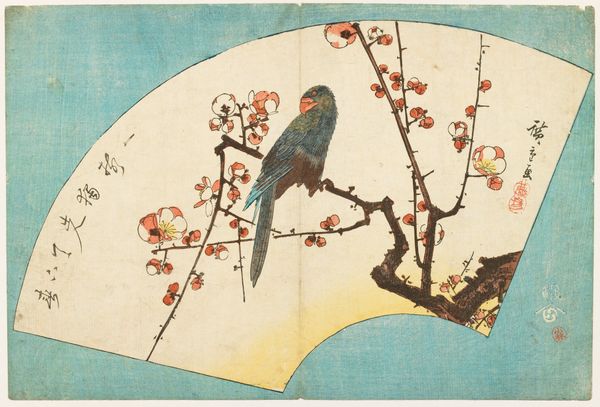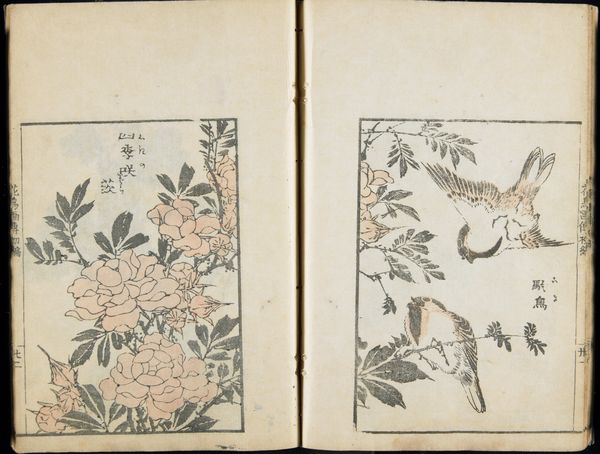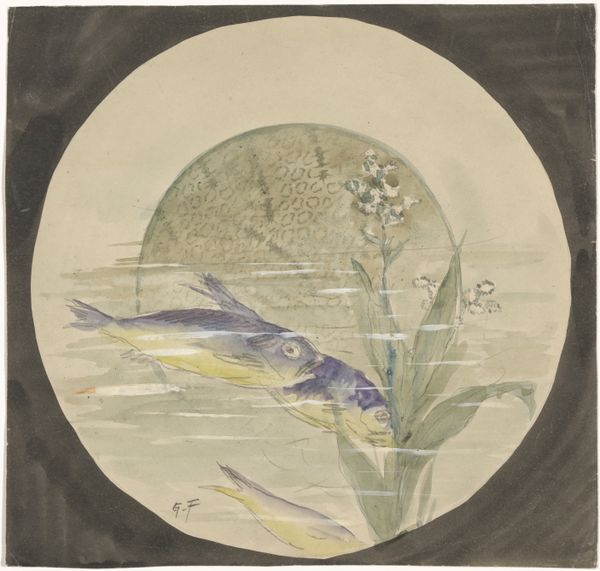
drawing, coloured-pencil, print, paper, ink, woodblock-print
#
drawing
#
aged paper
#
toned paper
#
coloured-pencil
#
narrative-art
# print
#
book
#
asian-art
#
bird
#
flower
#
ukiyo-e
#
paper
#
ink
#
coloured pencil
#
woodblock-print
#
orientalism
#
line
#
realism
Dimensions: 10 3/16 × 7 in. (25.8 × 17.8 cm)
Copyright: Public Domain
Curator: Take a moment to observe this artwork, "Suiseki Picture Album, Second Series," created around 1820 by Satō Suiseki. It is currently held in the collection of the Metropolitan Museum of Art. Editor: It's delicate, isn’t it? A feeling of understated beauty, of the everyday elevated by close observation. I notice how the composition, across the two pages of the open book, invites a slower, contemplative gaze. Curator: Yes, this work exemplifies Ukiyo-e and demonstrates several printing and drawing techniques—colored pencils, ink, and woodblock printing—all carefully applied on paper to construct the album. Editor: Ukiyo-e often depicted scenes from daily life, the ephemeral "floating world," and here we have nature presented with such meticulousness that the cultural weight of symbols seems particularly pronounced. Consider the flower buds, representing nascent possibilities. Curator: Absolutely. Suiseki’s choice of materials is quite deliberate. Paper and woodblock prints, traditionally used for mass production, find a different expression here, one bordering on a more refined art. What implications might that bear? Editor: Perhaps a commentary on fleeting moments rendered timeless. The small bird perched on the branch symbolizes freedom, spontaneity... but held captive on the page. This juxtaposition resonates deeply. The Japanese have a rich history of symbolism. It isn’t just a drawing of a bird; it's an invocation. Curator: Agreed. And if we analyze the social conditions that give rise to these particular styles—what we're also dealing with here is an orientalist perspective. What kind of labor produced this effect of "realism?" We need to investigate this context and consider if this type of craft had different associations in that moment. Editor: It speaks to the transience of existence. Considering that so many people interact with similar pieces in different parts of the world, this work, created two centuries ago, still evokes poignant feelings and experiences across different cultures. Curator: Very well put. And examining the production—from initial drawing to woodblock cutting—brings a clearer picture of 19th-century artistic practices. Editor: By looking through symbolic intent we glean broader historical perspectives of value systems in certain times and cultures. Curator: Indeed. A fascinating piece for unraveling artistic approaches. Editor: It truly opens a portal to the past, filled with so much emotional nuance and hidden meaning.
Comments
No comments
Be the first to comment and join the conversation on the ultimate creative platform.

